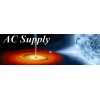Mathematics is an unavoidable subject. We all need it in life, but that doesn’t mean students jump for joy when it’s time to get out their math books. Over time, they may gain an appreciation for the subject, but we can help you speed up the process with these five fun ways to teach math with model rockets.
Rockets by Numerals
Building model rockets isn’t always an advanced process. Students and hobbyists must start somewhere. The beginning stage, level zero, is for students younger than 12. Start off with paper model rockets where students match the pieces based on the numbers.
In this method, students identify numerals and the number each numeral represents. This isn’t the most advanced activity, but it’s essential for youngsters learning how to count. Observe students as they match the rockets with numerals to the rocket with the dots. Place the correct number of dots inside the figure of the model rocket.
Rockets by Distance
Get students excited about the blast-off moment. Once the rocket launches, spark their curiosity about the distance traveled. Not every rocket has to launch vertically. Some of the less advanced models propel horizontally, parallel to the ground.
These rockets tend to be less dangerous. For this lesson, instruct students to construct and launch paper rockets and use graphs and nonstandard measurements to show how far the rockets have traveled. Have students predict how far the next rocket will travel. Students place an object on the floor at the point where they think the rocket will land.
Rockets by Physics
As the models get more advanced, so do the lessons. Physics plays a big part in model rockets and real-life rockets. Reserve this stage for middle schoolers and high schoolers because this is around the time they learn about force and Newton’s laws.
The excitement comes from the engine. The engine propels the rocket forward and students need to learn about the thrusting aspect. Explain the propulsion of a rocket. It ejects fuel at a very high velocity opposite to the desired direction of the motion. Give an example with a firework before graduating to a model rocket.
Rockets by Calculus
Calculus doesn’t always seem like the most exciting subject, but when it comes to rockets, it’s completely fascinating. Calculus is a field of mathematics that explains how values associated with a function change.
Your students will need calculus for almost every aspect of the building process. They will use it to build everything from the rocket nozzles—heat distribution and fuel flow—to calculating launch, cruise, and return trajectories. Teach students how calculus helps keep astronauts and spacecraft safe during a mission.
Rockets by Trigonometry
And the lessons keep on coming. Trigonometry does more than give students a headache. Teach students how the subject helps measure heights, lengths, and other distances.
Use trigonometry functions, ratios, and vectors to calculate how high and far a rocket can fly. These types of lessons are appropriate for the more advanced students, but at AC Supply, we have classroom rocket kits suitable for all skill levels.
Teaching math with model rockets has never been more fun, and we’ve got the supplies to prove it. For more information, visit our website.


